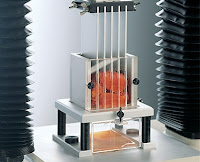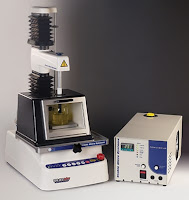 Veganism is growing in popularity due to increased education about its environmental, health and ethical benefits.
Veganism is growing in popularity due to increased education about its environmental, health and ethical benefits. An Alpro report from 2018 (‘Plant-Based Profits with Alpro and BB Food Service’) stated that the UK plant based market at the time was worth £443m, having grown by £129m in three years. Due to this growth, vegan alternatives to products traditionally made with animal produce have swarmed the food market, and most use the new term ‘plant-based’ to describe a vegan product. It is now possible to buy a vegan version of almost every animal based product from chocolate fudge cake to crispy duck, and new companies are popping up that are dedicated solely to plant alternatives.
With this increased competition in the market, manufacturers have to try harder than ever to match the taste, texture and cost of the real thing. Consumers now expect vegan products to be almost indistinguishable from their animal counterpart. This presents a great challenge, particularly when it comes to texture.
 |
| HDP/KS10 Kramer Shear Cell |
 |
| Temperature Controlled Peltier Cabinet |
 |
| Cheese Extensibility Rig |
 |
| Compression test of a gummy bear |
 |
| Acoustic Envelope Detector |
Every time a vegan alternative to a more traditional product is introduced to the market, it is crucial that its texture is a close match. There are now so many excellent imitations available that manufacturers who neglect this aspect of their product will find it relegated to the reduced section in the supermarket.
To find out more about any aspect of food Texture Analysis, talk to Stable Micro Systems today.
Our article ‘A world of food development possibilities with fruit’ presents a wide range of different texture measurements using the Texture Analyser on fruit ranging from dried, pureed, whole or processed.
Request this article >
Watch the video below to see a summary of the types of testing possibilities that are available for the measurement of fruit and vegetable texture to provide quality control tools and ultimately, consumer satisfaction:

For more information on how to measure texture, please visit the Texture Analysis Properties section on our website.
 The TA.XTplus texture analyser is part of a family of texture analysis instruments and equipment from Stable Micro Systems. An extensive portfolio of specialist attachments is available to measure and analyse the textural properties of a huge range of food products. Our technical experts can also custom design instrument fixtures according to individual specifications.
The TA.XTplus texture analyser is part of a family of texture analysis instruments and equipment from Stable Micro Systems. An extensive portfolio of specialist attachments is available to measure and analyse the textural properties of a huge range of food products. Our technical experts can also custom design instrument fixtures according to individual specifications.No-one understands texture analysis like we do!
To discuss your specific test requirements, click here...
 |  |  |


No comments:
Post a Comment